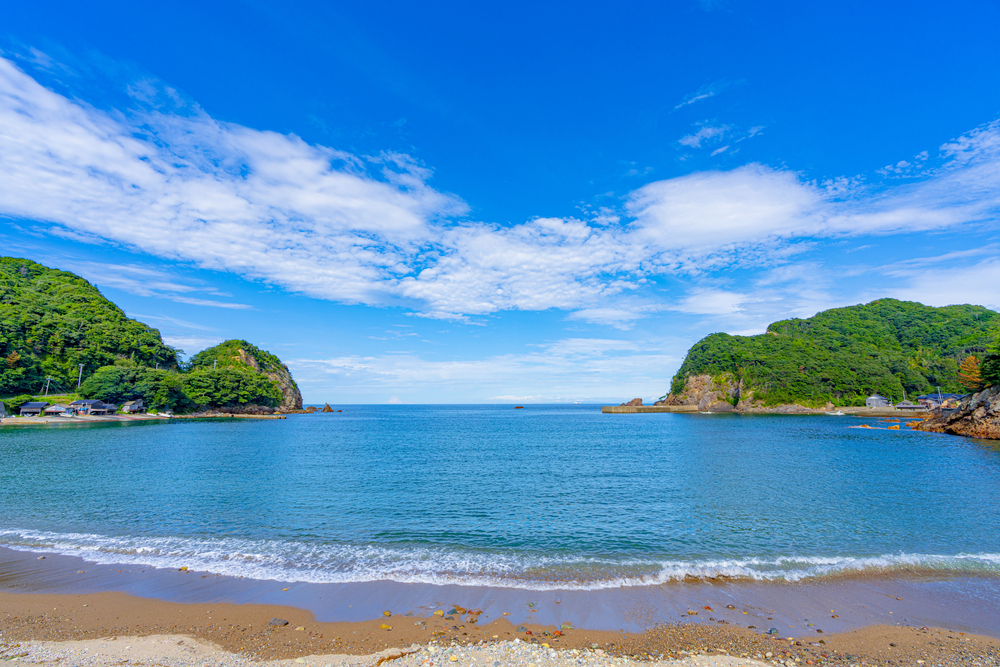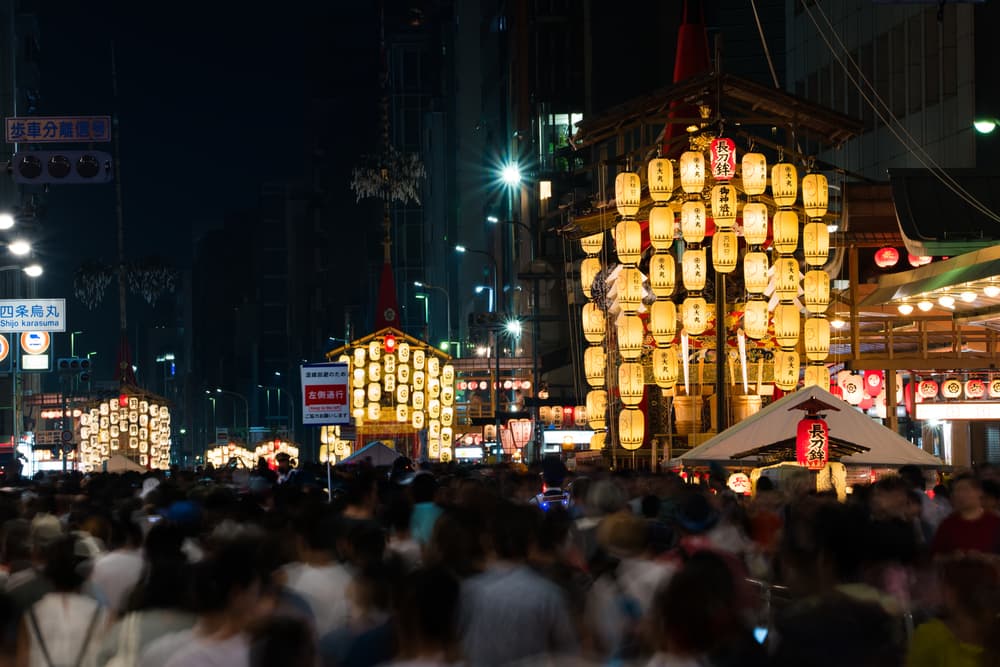If you are going to go sightseeing, you want to incorporate into your itinerary things that you can only see and experience during that time of the year. In this issue, we will introduce the conditions, events, and recommended spots in Kyoto in July for those who are interested in such things.
About Kyoto in July

Kyoto in July is known for the Gion Matsuri Festival! During this month, many tourists visit Kyoto to see the Gion Matsuri Festival, and the city is always crowded. July also brings the full-blown summer and the heat continues day after day. For tourists, sightseeing in the heat and crowds may be a challenge, but even so, Kyoto in July has an irresistible charm that is hard to change.
Atmospheric temperature
In July, Kyoto, like many other parts of Japan, is very hot and humid. Average temperatures hover between about 26 and 35 degrees Celsius. Because of the higher humidity compared to other areas, the temperature will actually feel even higher. It may feel a little cooler in the mornings and evenings, but do not be discouraged and be sure to stay hydrated and take appropriate breaks.
Events
Several traditional events take place in Kyoto in July. The most famous is the “Gion Matsuri Festival,” which is the highlight of the month of July with a variety of events taking place over the course of the month. The Yamahoko Junko (float procession) is the climax of the Gion Matsuri Festival, with the gorgeous Yamahoko floats parading through the city. During this period, the city is crowded with locals and tourists.
Travel
Kyoto is very popular for sightseeing in July, but it is especially hot during this time of the year, so it is best to take advantage of the cooler early morning and evening hours. When visiting historical sites such as Kiyomizu-dera Temple, Kinkaku-ji Temple, and Nijo-jo Castle, it is important to be prepared for the heat.
July Fashion
Light, breathable clothing is appropriate for visiting Kyoto in July. Clothing made of natural fabrics such as linen or cotton is recommended, and hats, sunglasses, and long-sleeved shirts are generally worn to protect against the sun. Comfortable walking shoes are also recommended, as you will be walking outdoors most of the time.
You definitely can’t miss it! Gion Matsuri Festival (祇園祭)

Kyoto in July is known for the Gion Matsuri Festival! The Gion Matsuri Festival has a history of more than 1,000 years, and a variety of festivities take place over the month of July from July 1 to 31. The city of Kyoto is filled with the excitement of the festival, especially during the Yamahoko Junko (float procession) and Yoiyama when many people come to see the floats.
Yamahoko Junko (float procession)

The Yamaboko Junko (float procession) is the highlight of the Gion Matsuri Festival, held on the 17th (Saki-matsuri) and 24th (Ato-matsuri)! Gorgeous and gorgeous floats known as Yamahoko will parade through the streets of Kyoto. On the day of the festival, it is very crowded, so if you want to take your time, reserve a seat for a spectator’s seat with a fee.
Yoiyama / small festival on the eve of the main festival (esp. of the Gion Matsuri Festival)

The floats are placed along the street, allowing visitors to walk nearby and admire the floats. The Saki-matsuri is held from July 14 to 16, and the Ato-matsuri from July 21 to 23. The Saki-matsuri on July 15 and 16 has a lively atmosphere with many stalls, while the Ato-matsuri does not have any stalls. The first festival, July 15 and 16, is lively with many stalls, while the second festival has no stalls, allowing visitors to enjoy the festival in its original solemnity.
Spots to feel cool in Kyoto
Due to the shape of the land, Kyoto is one of the most humid and hot areas in Japan. However, if you go a little further from the city center, where all the tourist attractions are concentrated, you can go to an area where you can feel the coolness of the great outdoors.
Hozukyo Gorge (保津峡)

Hozukyo Gorge is a sightseeing area famous for its Hozu River rafting and trolley trains. Because the area is surrounded by nature, it is relatively cool and comfortable. The Hozu River is famous for its acrobatic activity river rafting, but other recommended ways to spend time are to board a Yakatabune and enjoy the peaceful river scenery, or enjoy hiking and river fishing along the river. You can feel cool even in the hot summer of Kyoto.
Kiyotaki River (清滝川)

The Kiyotaki River area is a habitat for genji fireflies and giant salamanders, and the water is very clean. Hiking trails have been developed along the valley, allowing visitors to enjoy the natural beauty of the area. There are also temples along the river in the direction of Takao, where you can experience Japanese culture while hiking.
Funaya in Ine Town

Ine Town, located on the Tango Peninsula in Kyoto, is a popular area for its “Funaya,” old houses that look like they are floating on the sea. About 230 Funaya stand side by side along Ine Bay, forming a village. In Ine Town, there are sightseeing boats and venue cabs that allow visitors to see the Funaya from the sea, and to enjoy strolling along the streets. In a town so close to the sea, you will be able to feel the cool air.
Please note that people actually live in the Funaya, so be careful not to enter the buildings.
3 recommended beaches
Kyoto does not have much of an image of the sea, but there are areas facing the sea in the northern part of Kyoto Prefecture, and of course there are beaches as well. The area is not as crowded as Kyoto City and is a calm area, so it is recommended for those who want to enjoy the summer in Kyoto in peace and quiet.
Tomari Beach (泊海水浴場)

Tomari Beach is located in a cove and the water is clear, making it a great spot for children. In the evening, you can see the beautiful sunset on the horizon. There are also hot springs, guest houses, and other accommodations in the vicinity, making it a great place to spend a relaxing summer with the family.
Kanzaki Beach (神崎海水浴場)
Kanzaki Beach stretches approximately 2 kilometers from east to west with shallow sandy beach. The entire area is designated as Wakasa Wan Quasi-National Park and offers beautiful scenery. Barbecues, camping, and fishing are also available, making it a great place to create summer memories.
Amanohashidate Beach (天橋立海水浴場)

This beach is located on the Monju side, south of Amanohashidate. There are free water showers and hot showers for a fee. When you get tired of swimming, you can take a nap in the shade of the pine forest or rent a bicycle and go out to enjoy the sea all day long.


